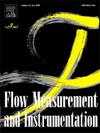Numerical analysis of hydro-abrasive erosion in a five-jet Pelton turbine distributor
IF 2.3
3区 工程技术
Q2 ENGINEERING, MECHANICAL
引用次数: 0
Abstract
In high-head hydropower plants, the Pelton injector is prone to erosion even for low sediment concentration and smaller size particles due to high flow velocities. Here, the effect of complex flow in a five-jet Pelton distributor is considered for analysing the erosion in the injector and distributor numerically. The discrete phase model based on an Eulerian-Lagrangian approach is used for tracking sediment particles. In this study, a good agreement of the obtained results with the experiments and field observations in a high-head hydropower plant validated the numerical methods selected. For larger-sized particles, a significant difference in the erosion among nozzles of the distributor was found. However, the difference in the erosion was reduced for smaller-sized particles. Further, erosion observed in the fifth nozzle was four times higher than the second nozzle considering 200 μm size particles during part-load conditions. Variation of sediment impact velocity due to change in sediment size has a similar trend for both the nozzle and needle surfaces. In contrast, variation in sediment concentration in the nozzle and needle resulted in an inverse relation with sediment size. The asymmetrical erosion pattern obtained for the nozzle is consistent with the erosion pattern from the prototype plant. Asymmetricity was also observed in the distribution of sediments in the jet, substantially for the fifth injector. The head loss at the third bifurcation is two times more at the full-load condition compared to the part-load condition.
五喷流水轮机分布器水磨料侵蚀的数值分析
在高水头水电站中,由于水流速度大,即使泥沙浓度低、颗粒尺寸小,Pelton喷射器也容易受到侵蚀。本文考虑了五喷流派尔顿分布器内部复杂流动的影响,对喷流器和分布器内部的侵蚀进行了数值分析。采用基于欧拉-拉格朗日方法的离散相模型对泥沙颗粒进行跟踪。本文研究结果与某高水头水电站的试验和现场观测结果吻合较好,验证了数值方法的正确性。对于较大粒径的颗粒,分布器喷嘴间的侵蚀有显著差异。然而,对于较小尺寸的颗粒,侵蚀的差异减小了。此外,在部分负荷条件下,考虑到200 μm颗粒,在第五个喷嘴中观察到的侵蚀比第二个喷嘴高4倍。在喷嘴表面和针状表面,泥沙冲击速度随泥沙粒径变化的变化趋势相似。相反,喷嘴和针内泥沙浓度的变化与泥沙大小成反比。喷管的非对称侵蚀模式与原型装置的侵蚀模式一致。在射流中也观察到沉积物分布的不对称性,特别是在第五个注入器中。三分岔的水头损失在满负荷工况下是部分负荷工况下的两倍。
本文章由计算机程序翻译,如有差异,请以英文原文为准。
求助全文
约1分钟内获得全文
求助全文
来源期刊

Flow Measurement and Instrumentation
工程技术-工程:机械
CiteScore
4.30
自引率
13.60%
发文量
123
审稿时长
6 months
期刊介绍:
Flow Measurement and Instrumentation is dedicated to disseminating the latest research results on all aspects of flow measurement, in both closed conduits and open channels. The design of flow measurement systems involves a wide variety of multidisciplinary activities including modelling the flow sensor, the fluid flow and the sensor/fluid interactions through the use of computation techniques; the development of advanced transducer systems and their associated signal processing and the laboratory and field assessment of the overall system under ideal and disturbed conditions.
FMI is the essential forum for critical information exchange, and contributions are particularly encouraged in the following areas of interest:
Modelling: the application of mathematical and computational modelling to the interaction of fluid dynamics with flowmeters, including flowmeter behaviour, improved flowmeter design and installation problems. Application of CAD/CAE techniques to flowmeter modelling are eligible.
Design and development: the detailed design of the flowmeter head and/or signal processing aspects of novel flowmeters. Emphasis is given to papers identifying new sensor configurations, multisensor flow measurement systems, non-intrusive flow metering techniques and the application of microelectronic techniques in smart or intelligent systems.
Calibration techniques: including descriptions of new or existing calibration facilities and techniques, calibration data from different flowmeter types, and calibration intercomparison data from different laboratories.
Installation effect data: dealing with the effects of non-ideal flow conditions on flowmeters. Papers combining a theoretical understanding of flowmeter behaviour with experimental work are particularly welcome.
 求助内容:
求助内容: 应助结果提醒方式:
应助结果提醒方式:


